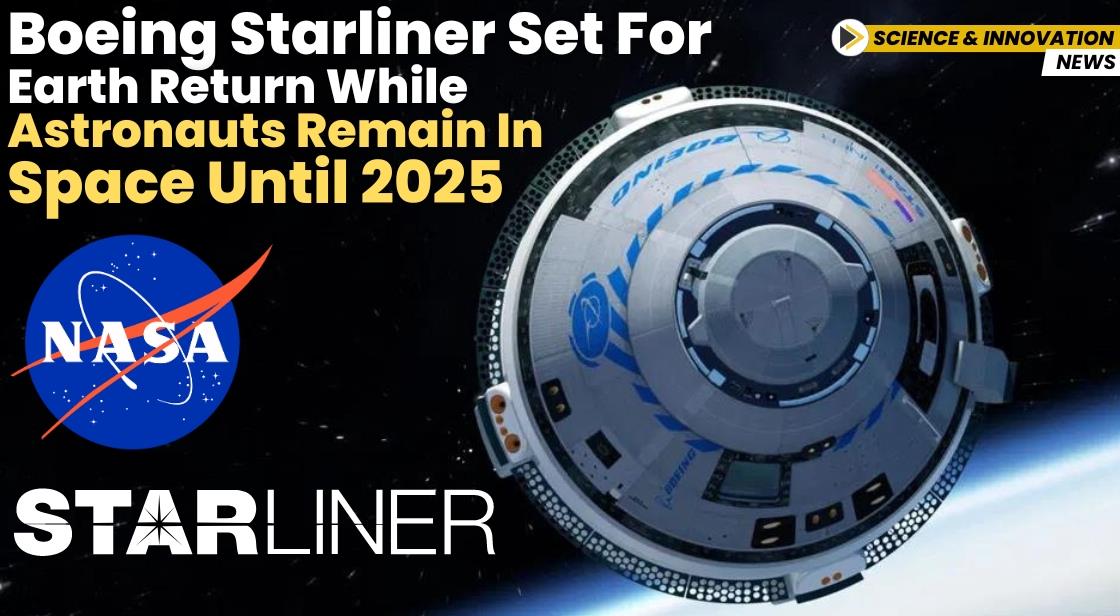Boeing Starliner Set for Earth Return While Astronauts Remain in Space Until 2025

News Synopsis
NASA’s Boeing Starliner spacecraft is preparing for its highly anticipated return to Earth this Saturday, marking another milestone in the ongoing mission aboard the International Space Station (ISS). However, despite the return of the spacecraft, astronauts Butch Wilmore and Suni Williams will remain aboard the ISS until February 2025, continuing their mission under NASA's SpaceX Crew-9 program. The return of the uncrewed Starliner spacecraft is part of NASA’s partnership with Boeing to develop a reusable spacecraft that can transport astronauts and cargo to and from low Earth orbit.
Boeing Starliner to Return Uncrewed: Timeline and Key Details
The Boeing Starliner spacecraft is scheduled to autonomously undock from the ISS at 3:15 AM IST on Friday. If weather conditions permit, the spacecraft will embark on its return journey to White Sands Space Harbour in New Mexico, where it is expected to land at approximately 9:33 AM on Saturday.
This mission, though uncrewed, is significant as it demonstrates the capabilities of the Starliner system, particularly in terms of automated docking and undocking procedures with the ISS. Boeing and NASA will provide live coverage of the spacecraft’s return, which will be broadcast on NASA+, the NASA app, and the agency’s official website.
Why the Crew Stays in Space
Astronauts Butch Wilmore and Suni Williams, who originally launched aboard the Starliner on June 5, arrived at the ISS the following day. However, due to technical issues that surfaced with the spacecraft, NASA made the decision to return the Starliner to Earth without its crew. On August 24, NASA cited problems with the Starliner’s helium leaks and issues with its reaction control thrusters as the primary reasons for this adjustment.
As a result, Wilmore and Williams will remain aboard the ISS until February 2025, continuing their space mission as part of NASA’s SpaceX Crew-9 mission. This mission, which is scheduled to launch no earlier than September 24, 2024, will bring additional crew members to the ISS while facilitating the astronauts' eventual return to Earth aboard the SpaceX Dragon spacecraft.
Importance of the Starliner Program
The Boeing Starliner spacecraft is part of NASA’s Commercial Crew Program, aimed at developing safe, reliable, and cost-effective transportation for astronauts to and from the ISS. Alongside SpaceX’s Dragon spacecraft, Starliner represents a critical component of NASA’s future crewed missions to low Earth orbit and beyond.
Despite the delays and technical challenges, the successful return of the uncrewed Starliner would signify a step forward in NASA’s efforts to diversify its transportation capabilities. Boeing continues to work on addressing the technical issues with the Starliner to ensure its readiness for future crewed missions.
Upcoming SpaceX Crew-9 Mission and Its Significance
The upcoming SpaceX Crew-9 mission, set to launch no earlier than September 24, 2024, marks yet another critical milestone in NASA’s ongoing efforts to expand human presence in space. This mission, part of NASA's Commercial Crew Program, will transport astronauts to the International Space Station (ISS) aboard SpaceX’s Dragon spacecraft, continuing the collaboration between SpaceX and NASA in space exploration and low-Earth orbit operations.
Crew-9 Mission Overview
Crew-9 will not only replace the existing crew on the ISS but also bring additional astronauts to further the station's research and scientific objectives. The mission will include conducting scientific experiments, maintaining the space station’s systems, and preparing for future deep-space exploration, including potential missions to the Moon and Mars under NASA’s Artemis program.
Significance of the Mission
-
Continued Partnership with SpaceX: Crew-9 demonstrates the ongoing collaboration between NASA and SpaceX, solidifying the Dragon spacecraft as a reliable means for transporting astronauts to and from the ISS.
-
Advancing Research: The extended stay of astronauts like Butch Wilmore and Suni Williams will allow for continued scientific research, including experiments in microgravity that benefit Earth and future long-term space missions.
-
Boosting Commercial Space Exploration: This mission further establishes the role of private companies like SpaceX in advancing space exploration, providing NASA with critical flexibility and innovative technology.
-
Paving the Way for Future Space Missions: As part of NASA’s broader exploration goals, Crew-9 and similar missions lay the groundwork for future ventures, including human spaceflight to the Moon and beyond.
Conclusion:
The return of Boeing’s Starliner spacecraft marks a crucial step in NASA's ongoing efforts to refine its commercial crew transportation capabilities. Despite technical challenges that prompted the uncrewed return, this mission demonstrates Boeing's commitment to advancing space exploration. Meanwhile, astronauts Butch Wilmore and Suni Williams will continue their important work aboard the ISS until 2025, awaiting their return on SpaceX's Crew-9 mission. As NASA and Boeing work to address Starliner’s issues, the success of this program remains vital to ensuring diverse and reliable access to space in the years to come.
You May Like









